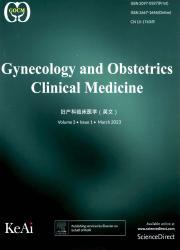“非典型”HELLP综合征的临床诊断与治疗
Q4 Medicine
引用次数: 0
摘要
HELLP综合征被认为是子痫前期最严重的表现之一,但约15%的HELLP综合征患者没有子痫前期的临床表现;此外,尽管大多数HELLP综合征发生在34周后,但也有一些病例发生在更早的妊娠阶段,甚至在妊娠20周之前,因此应更积极地探索发病很早的“非典型”HELLP综合征的潜在发病机制或非子痫前期表现的基础。产科医生应仔细鉴别“非典型”HELLP综合征的潜在病因,以便提供合理的治疗,改善母胎预后。本文章由计算机程序翻译,如有差异,请以英文原文为准。
Clinical diagnosis and treatment of “atypical” HELLP syndrome
HELLP syndrome is regarded as one of the most serious manifestations of preeclampsia, but approximately 15% of patients with HELLP syndrome have no clinical manifestations of preeclampsia; furthermore, although most cases of HELLP syndrome occur after 34 weeks, some cases occur at a much earlier gestational stage, even before 20 weeks of gestation, the underlying pathogenesis of “atypical” HELLP syndrome with very early onset or the basis of non-preeclampsia manifestations should be more actively explored. Obstetricians should carefully identify the potential etiology of “atypical” HELLP syndrome in order to provide a reasonable treatment and improve maternal and fetal prognosis.
求助全文
通过发布文献求助,成功后即可免费获取论文全文。
去求助
来源期刊

Gynecology and Obstetrics Clinical Medicine
Medicine-Obstetrics and Gynecology
CiteScore
0.70
自引率
0.00%
发文量
35
审稿时长
18 weeks
 求助内容:
求助内容: 应助结果提醒方式:
应助结果提醒方式:


